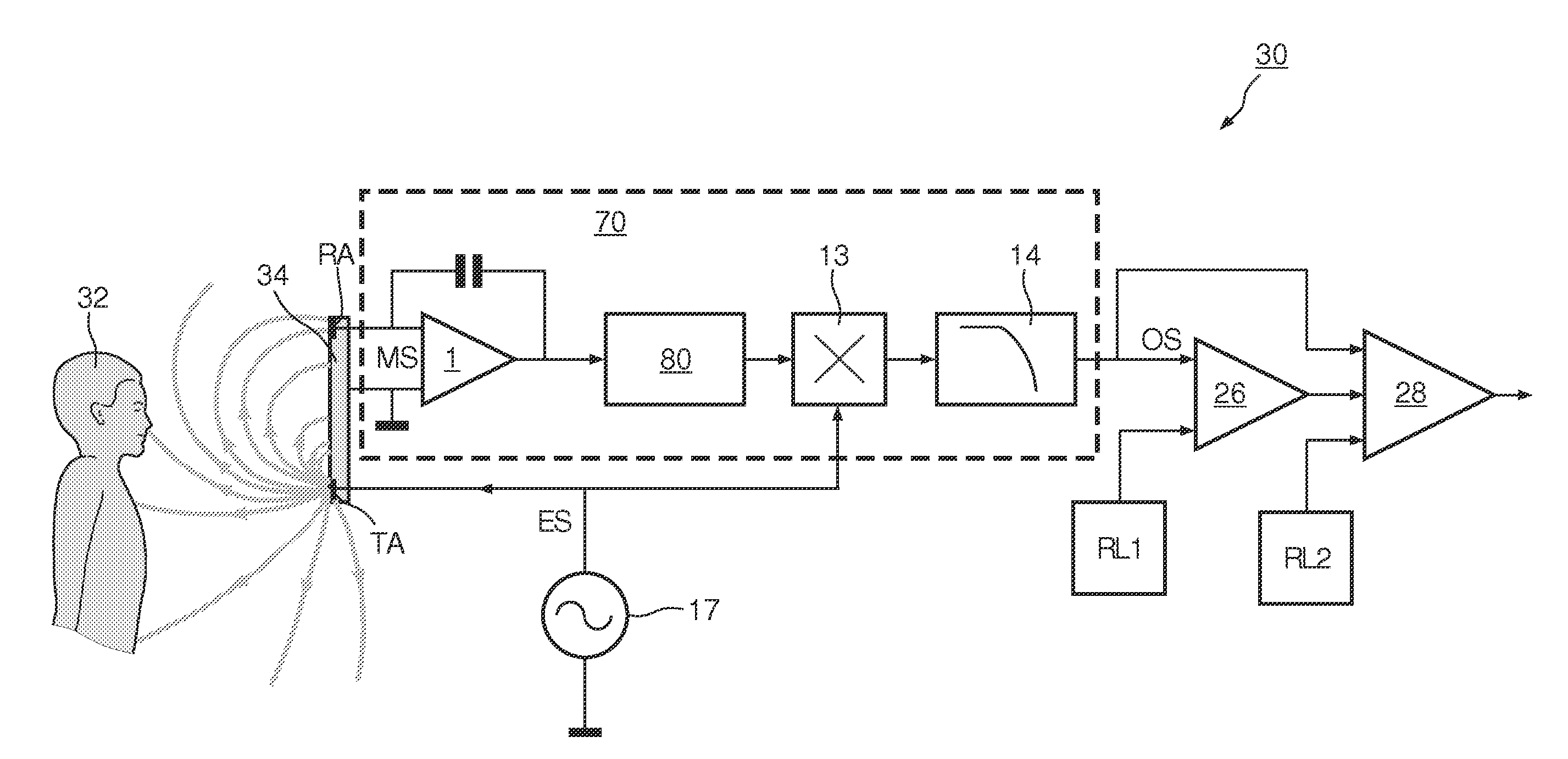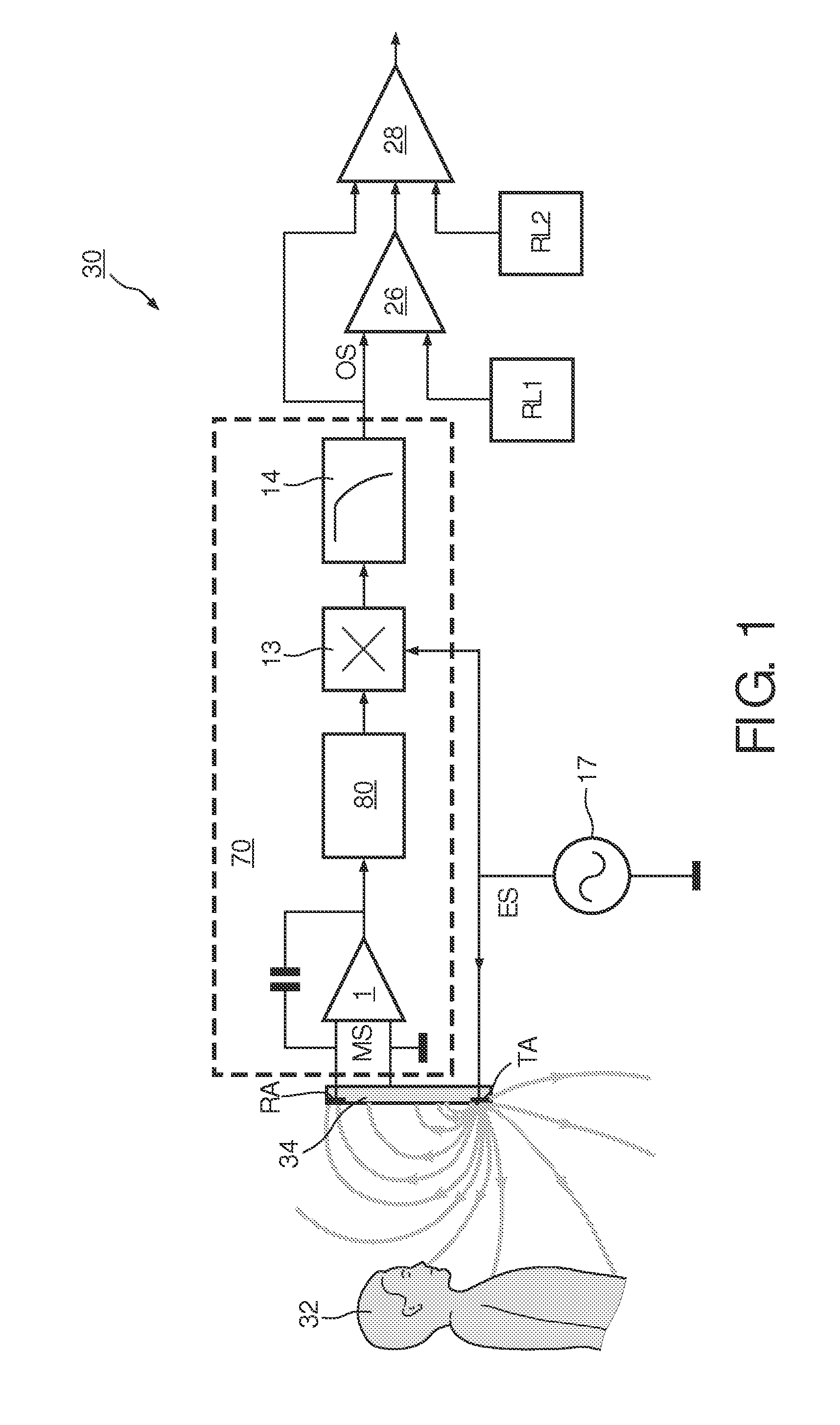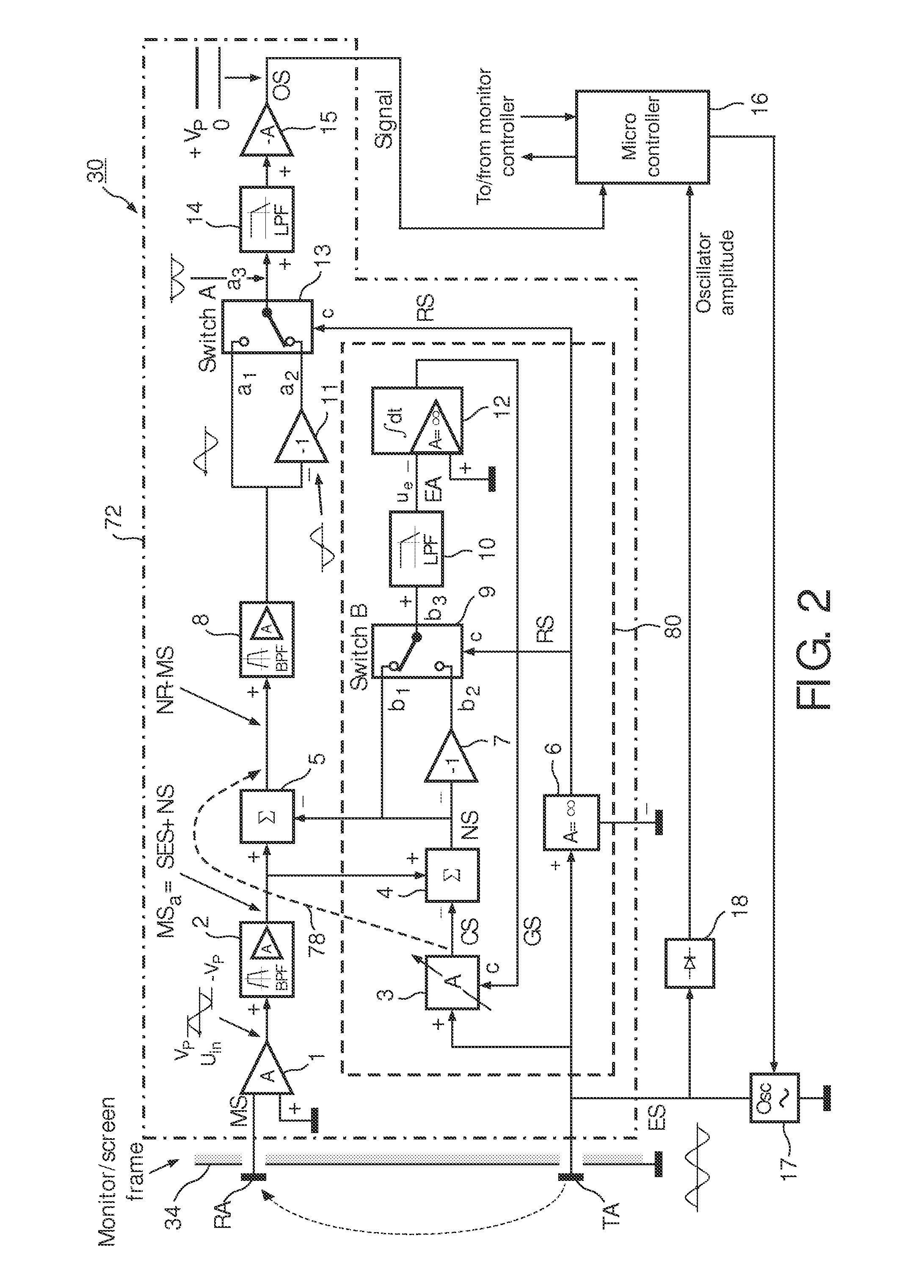Capacitive proximity device and electronic device comprising the capacitive proximity device
- Summary
- Abstract
- Description
- Claims
- Application Information
AI Technical Summary
Benefits of technology
Problems solved by technology
Method used
Image
Examples
Embodiment Construction
FIG. 1 shows a schematic representation of a capacitive proximity device 30 according to the invention. The capacitive device 30 is arranged at an electronic device, for example, a display device 34 and typically at the rim of the display device 34. The capacitive proximity device 30 comprises an emission electrode TA, in the example shown in FIG. 1 arranged at the bottom-rim of the display device 34, and a receiver electrode RA, in the example shown in FIG. 1 the receiver electrode RA is arranged at the top-rim of the display device 34. An oscillator 17 is connected to the emission electrode TA and generates an emission signal ES which is emitted via the emission electrode TA to generate an alternating electric field (indicated in FIG. 1 with the curved lines comprising an arrow which originate from the emission electrode TA. The capacitive proximity device 30 further comprises a sensing circuit 70 connected to the receiver electrode RA and arranged for detecting and amplifying the...
PUM
 Login to View More
Login to View More Abstract
Description
Claims
Application Information
 Login to View More
Login to View More - R&D
- Intellectual Property
- Life Sciences
- Materials
- Tech Scout
- Unparalleled Data Quality
- Higher Quality Content
- 60% Fewer Hallucinations
Browse by: Latest US Patents, China's latest patents, Technical Efficacy Thesaurus, Application Domain, Technology Topic, Popular Technical Reports.
© 2025 PatSnap. All rights reserved.Legal|Privacy policy|Modern Slavery Act Transparency Statement|Sitemap|About US| Contact US: help@patsnap.com



